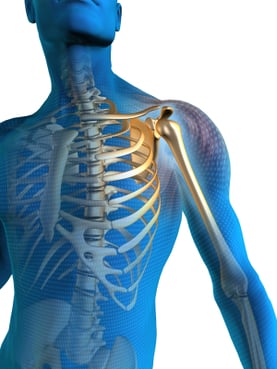Vibration therapy is not a new therapy but has been gaining interest in individuals with spinal cord injury, stroke, Parkinson's disease, multiple sclerosis, and other neurological diseases. The theory is that vibration therapy assists with increasing bone density, reducing muscle spasms, and increasing muscle tone. Researchers are studying the full effects of this therapy. Individuals with neurological issues are trying it with some satisfaction.
There are two basic modes of delivery of vibration therapy. One is a whole-body therapy that involves specialized equipment. Another is a local vibration to individual muscle groups using a handheld device. One cannot necessarily be substituted for the other as the treatments and results are different; however, benefits can be gained by using either therapeutic delivery.
The basic theory of vibration therapy is that the stretch reflex in the muscles is stimulated. Inside every muscle of the body is an automatic reflex, the stretch reflex, which is constantly looking to be stimulated through movement. In paralysis, this reflex is not sending or receiving messages effectively to and from the brain. Even though the muscle is not receiving or sending messages, the stretch reflex is waiting for this to happen.
Spasticity (tone) is often a complication of this lack of communication by the brain and the desire of the muscles to move. This is because the muscles below your level of injury or those affected by neurological conditions can still work but unable to communicate with the central nervous system. In other cases, such as nerve injury causing flaccidity, the muscles lack tone and become smaller. The goal of vibration therapy is to re-educate stretch reflexes. This will reestablish communication with the brain reducing spasticity or building muscle in flaccidity types of injury.
Whole-body vibration therapy is delivered in either of two ways. In rotational vibration, force is applied to the feet separately, alternating one at a time. The feet are placed farther apart than in a typical standing position. Vibration is applied to one foot and then the other. In vertical stimulation vibration, force is applied equally to both lower extremities at the same time. The amplitude of vibration has been established for adults, but further research about this needs to be conducted to see if different amplitudes increase or decrease results. Also, more research on the length of time of vibration is being refined.
Whole-body vibration therapy is typically used in a therapeutic setting, such as in a rehabilitation hospital or clinic. Learning to use the equipment is necessary as you will want the type of treatment that will best suit your individual needs as well as any adaptions to support your body during the treatment session. Some vendors do sell this equipment directly to the consumer. Payors may or may not support you in obtaining this therapy. Changes in obtaining financial support for vibration therapy may occur as this therapy is becoming more typical.
As always, before beginning any new therapy, you will want to check with your healthcare provider to ensure that your body can tolerate vibration therapy without complications. Attempting any new or change to your therapeutic treatment should always be evaluated for benefits vs. risks to you as an individual.
Stabilized health conditions are a prime consideration for vibration therapy, including stabilized spine and brain issues. This is to prevent further injury to an unstable spine or brain. Other concerns that could be affected by vibration therapy include: broken bones due to poor bone density, the release of a deep vein thrombosis or blood clot, tissue damage from acute or severe edema, increased cardiac issues, rupturing of herniated discs, increased arthritis, dislodgement of bone replacements or heart valves, increased damage from peripheral vascular disease, triggering seizures, effects to deep brain stimulators or spinal stimulators, and pressure injury from constant movement.
Your healthcare provider may have other concerns particular to your specific health history. It is always in your best interests to check your ability to participate in any therapeutic treatment to ensure your health.
Benefits to whole-body vibration therapy for those with spinal cord injury might include reducing spasticity (tone), improvements in balance, posture, knee flexion and building muscle. Improvement may occur with gait or walking function for those with incomplete spinal cord injury. Individuals with stroke have noticed postural improvement leading to fewer falls. For those with Parkinson's disease, there could be an improvement in balance and function. For those with multiple sclerosis, improvement in lower leg strength, posture, spasticity, and function have been noted.
These may seem like small improvements for anyone's therapy, but they can be extremely significant for quality of life and functional gains. Enough studies have not been completed to establish how long these improvements will be maintained.
Local vibration therapy is the second type of vibration therapy that is specific to individual muscle groups. In this treatment, a handheld mechanical vibrator is used. This therapy has often been utilized in the upper extremities, where the muscles are smaller than in the legs. Typically, the vibrator is held or attached to the individual's hands with the vibration, affecting the muscles of the fingers, hands, and arms. The individual performs an activity while the vibration is active. In whole-body vibration, the activity is standing, and in local vibration therapy, the activity is arm function.
The same health precautions for local vibration therapy are used to assess if your body is ready for this therapy. Even though the vibration is less in amplitude in upper arm therapy, vibration can shimmy through your whole body, so you want to be sure you are safe in doing this therapy as well.

